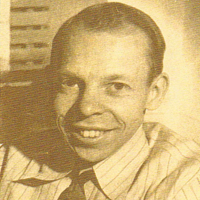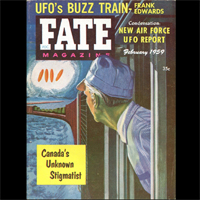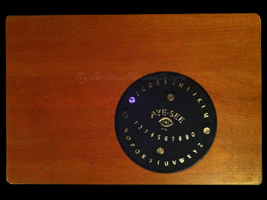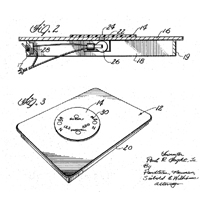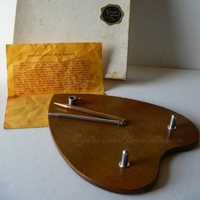Clark Publishing Company was founded by the famed science fiction writer and editor Ray Arthur Palmer, who edited Amazing Stories during its 1940s heyday and went on to create such magazines as Fate, Imagination, and Other Worlds. Palmer is a fascinating character; a driven, diminutive hunchback credited with, among other things, founding the first so-called fanzine (The Comet), buying Isaac Asimov's first professional story, and igniting the modern UFO craze by publishing reports of "flying discs". He was a successful pulp writer in his own right, and an ardent promoter of spiritualism, conspiracy theories, and alternative explanations of reality.
In 1948, Palmer co-founded Clark Publishing Company with partner Curtis Fuller, in order to publish Fate magazine, which deviated from his previous sci-fi efforts by printing articles on such diverse paranormal topics as divination, life after death, prognostication, anomalous phenomena, seances, ghosts, cryptozoology, and out-of-place artifacts. It proved highly popular, walking a thin line between the fantastic and skepticism, and had over 100,000 subscribers at its peak. By the 1960s, Fuller and his wife took full control of the enterprise, and the paranormal interests manifested further with the founding of Venture Bookshop in Evanston Illinois. The shop not only offered books and paranormal devices, but also a mail-order business heavily advertised in the various publishing endeavors of the company. Such items include pendulums, tarot cards, and crystal balls, but also more bizarre items they manufactured, including "vibroscopic" divining rods, "aura goggles" with "pinacyanole bromide" for detecting the natural auras of organic and inanimate objects, and, of course, tools for speaking to the dead.
The "Aye-See" board was one such device, and one of the most interesting talking boards ever produced. Invented by the bookshop's buyer, John Foght, it consists of two parts. The base board is a rectangular maple board, smoothly sanded with a blonde-orange varnish, 12-inches by 18-inches on the side, and about 2-inches high. The board is electrically wired, with a long white cord and a small toggle switch on one short side of the board. Underneath, the wiring connects to a small bulb positioned just below a small round plastic lens about 1/4-inch in diameter that penetrates through the board at its center.
Turning on the board allows the light to shine through to the topside, where the contraption's planchette comes into play. The planchette is a 7-inch diameter piece of thin, hard plastic, molded with letters, numbers, and a mystic eye symbol. The planchette glides easily over the smooth surface of the board, and as it moves over the illuminated lens, the light penetrates the board, lighting up the chosen letter from below with a nice purple glow. Perfect for dark seances and late-night entertainment, it remains an intriguing board. It was sold as early as 1963, its name trademarked by 1965, and the device patented by 1967.
Venture Bookshop also manufactured a more traditional planchette. Like the Aye-See, it has high production values and a great quality comparable with some of the best ever produced, and holds the most similarities with the much earlier Weyers Bros. planchettes. The heart-shaped board is made of walnut, with straight edges, rather than round. It has high-quality varnish on both sides of the board. The castors are the small ball-bearing type, very similar to the Psycho board's castors. Their slender aluminum shafts are of a consistent diameter, and penetrate to the topside of the board, where they thread into two smooth caps. The aperture is constructed of aluminum as well, and consists of a simple sleeve insert and a small screw to hold a custom, tiny diameter faux-brass mechanical pencil in place, which can also be reversed so that its rounded end can turn the planchette into a talking board pointer.







